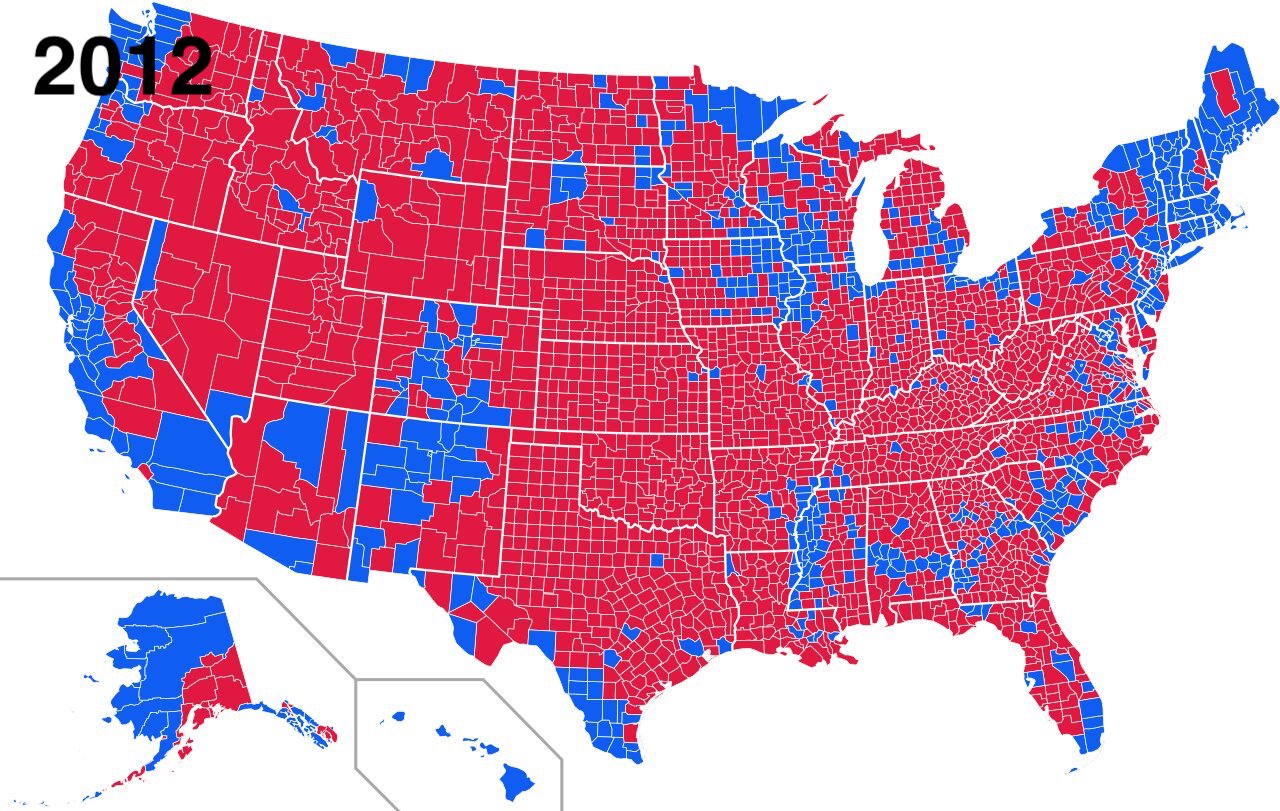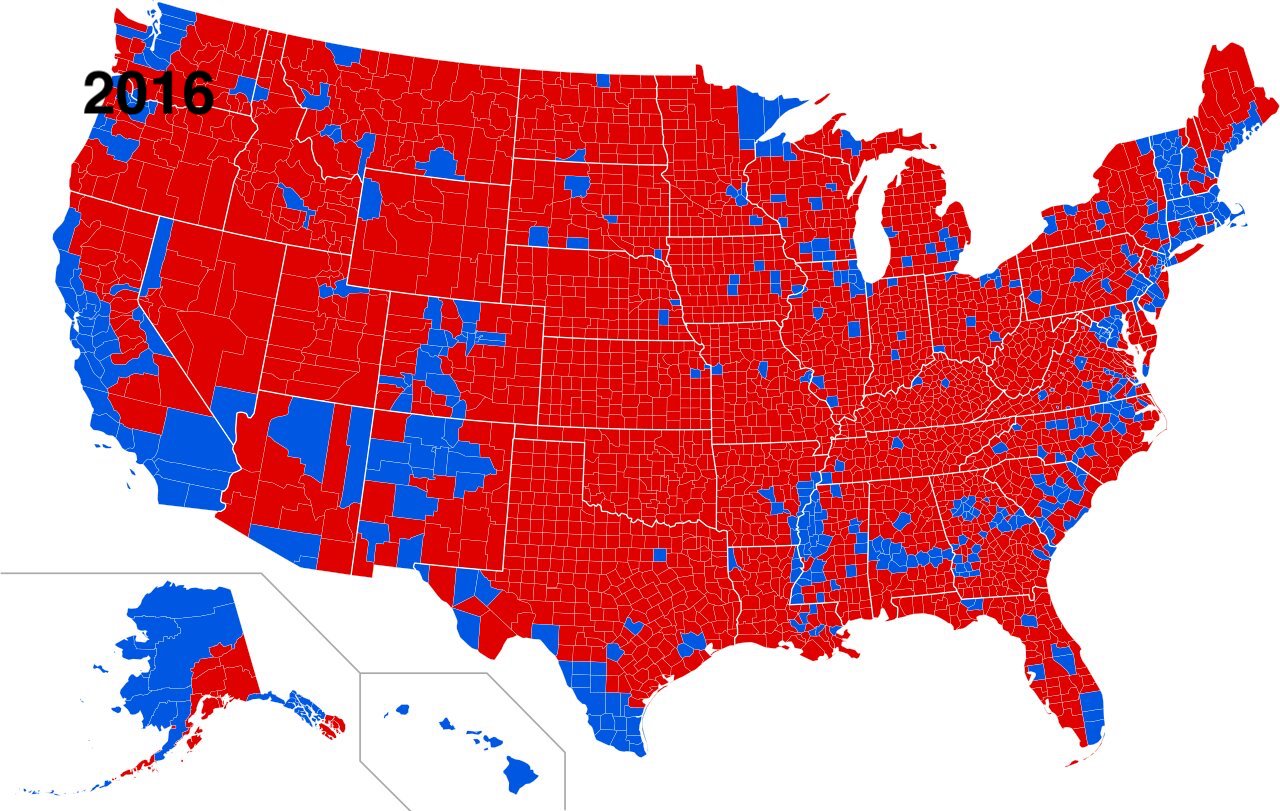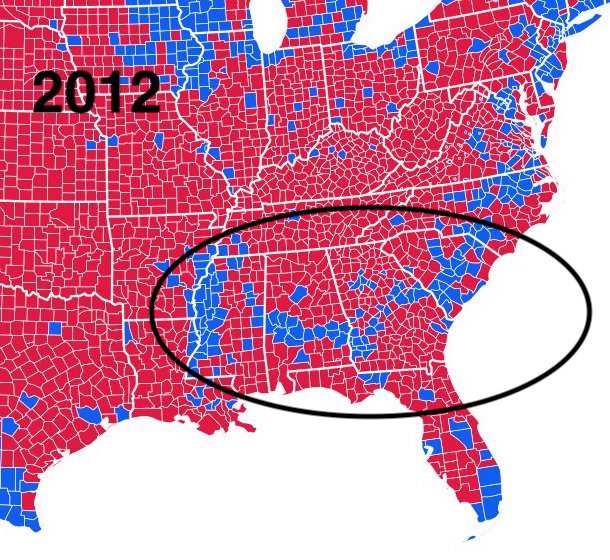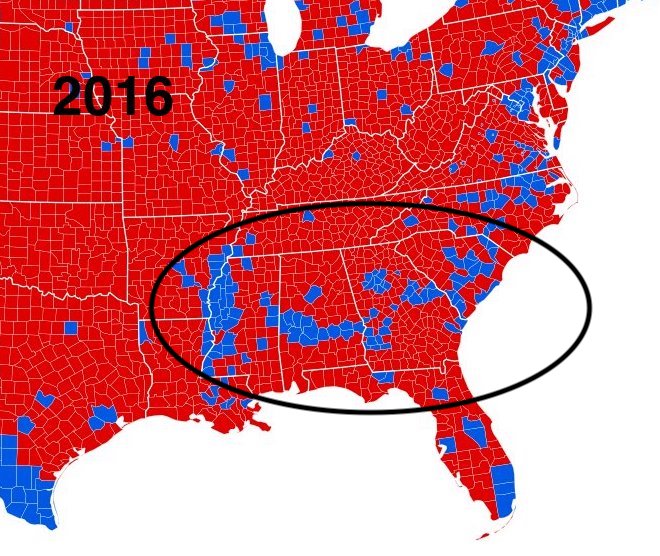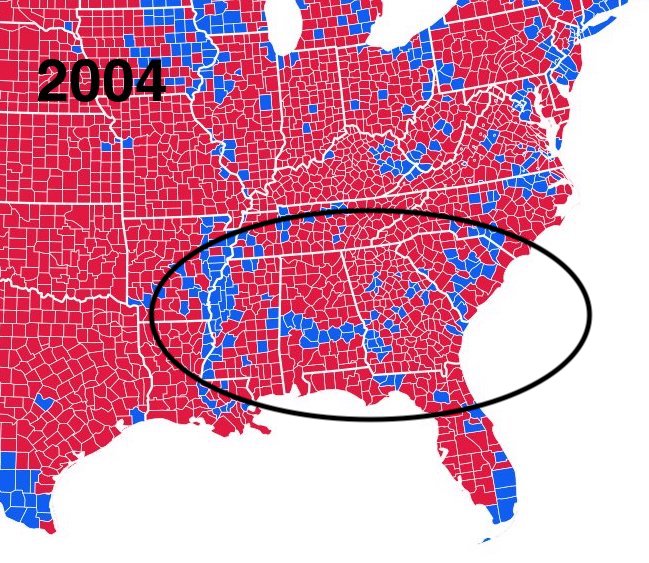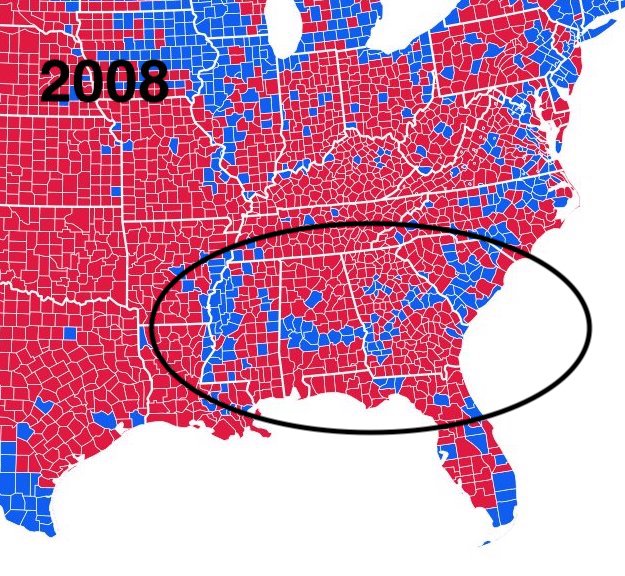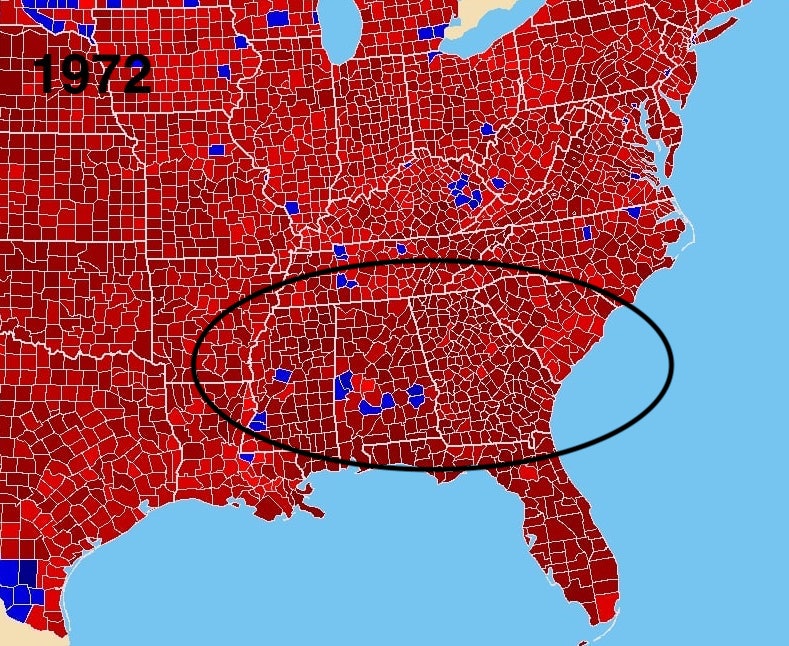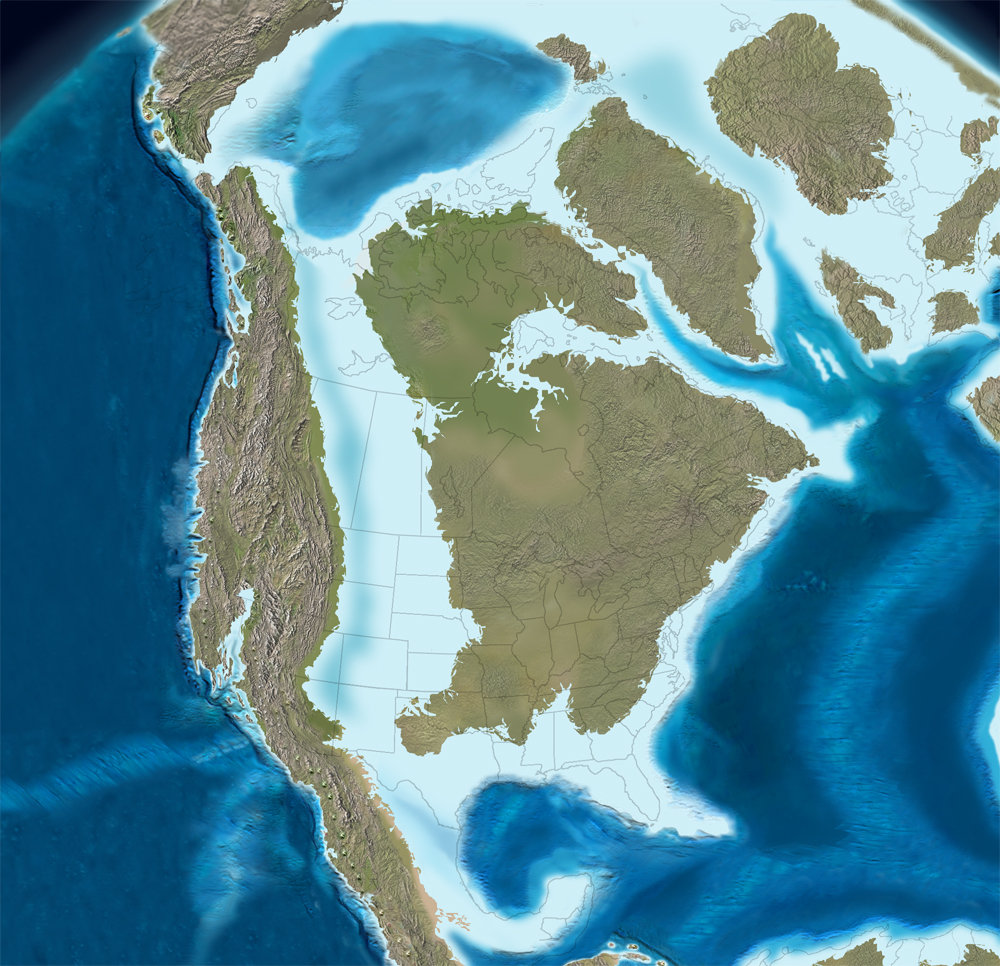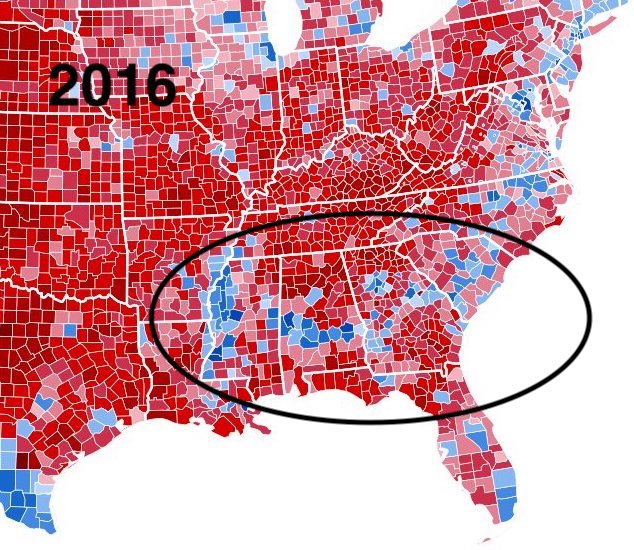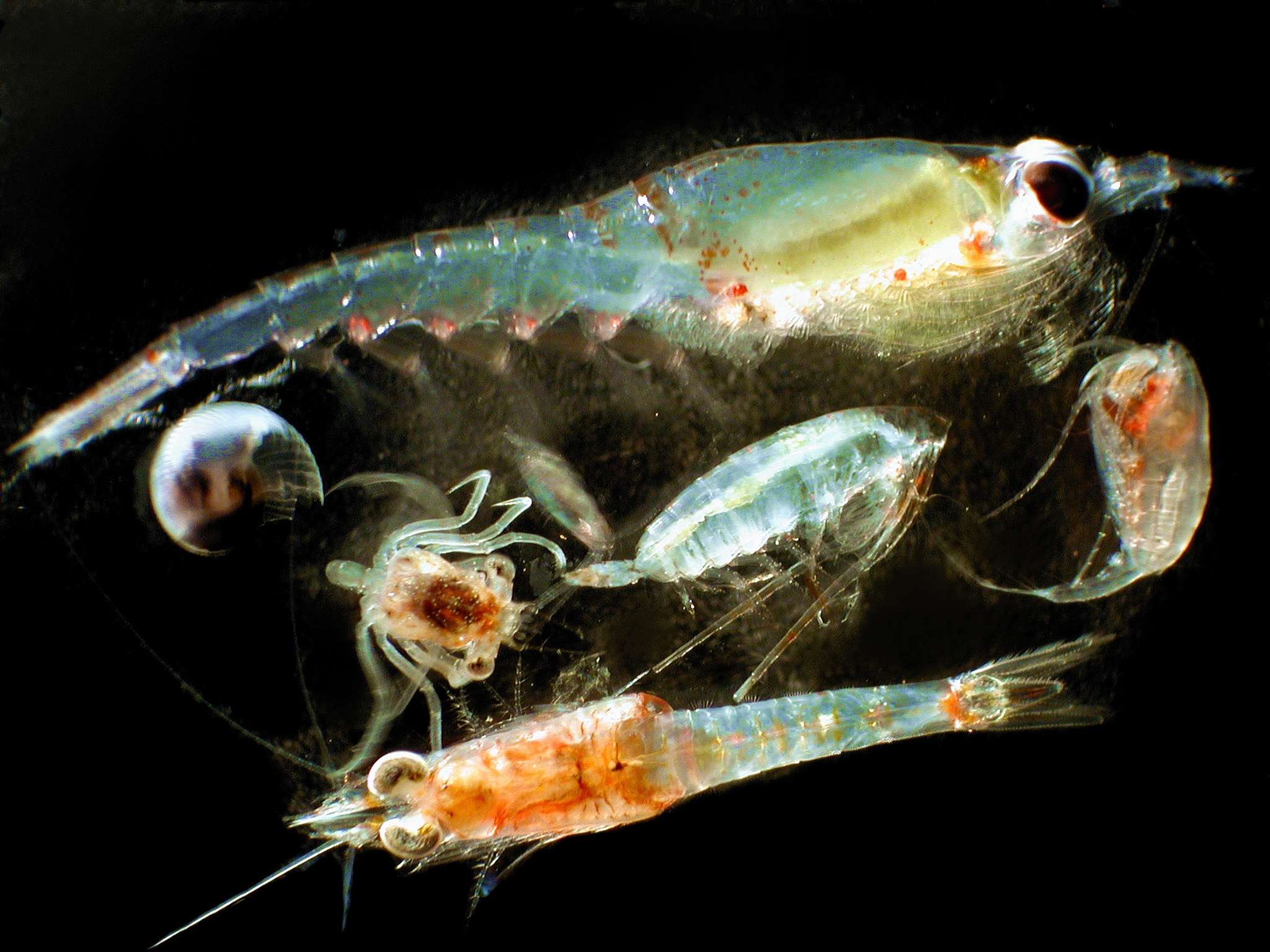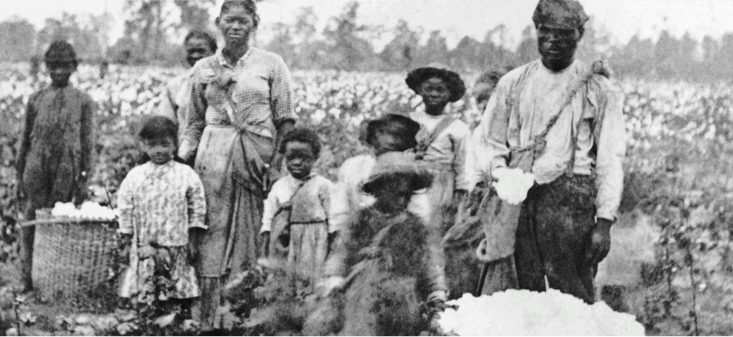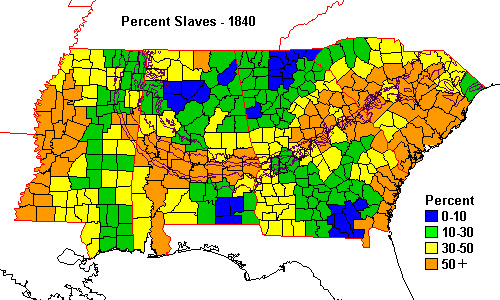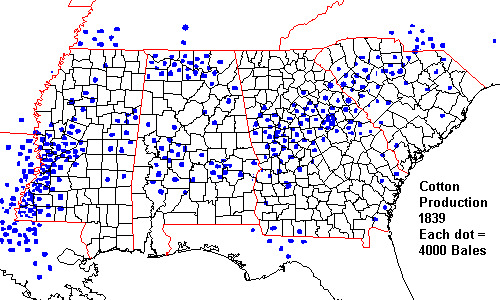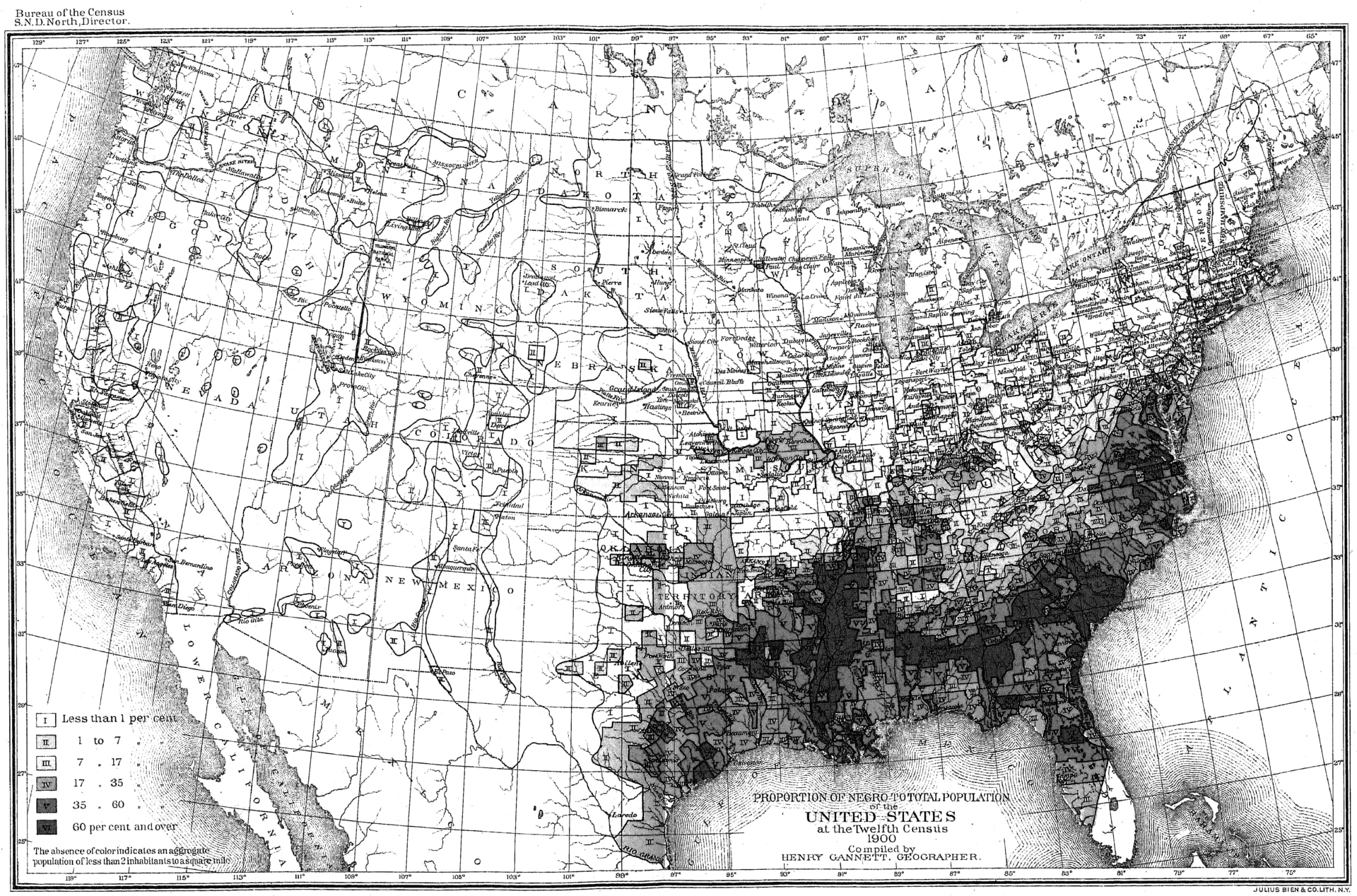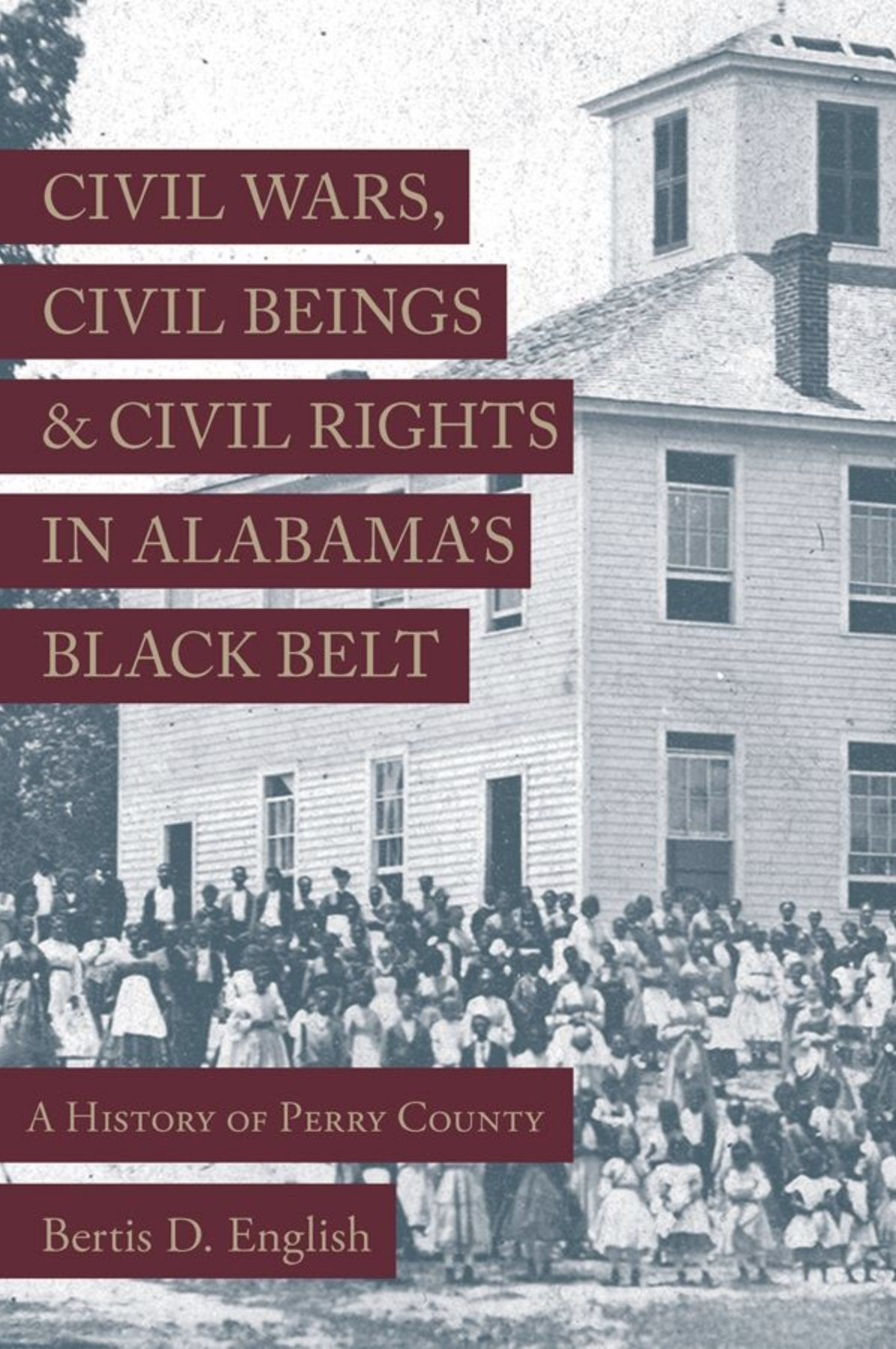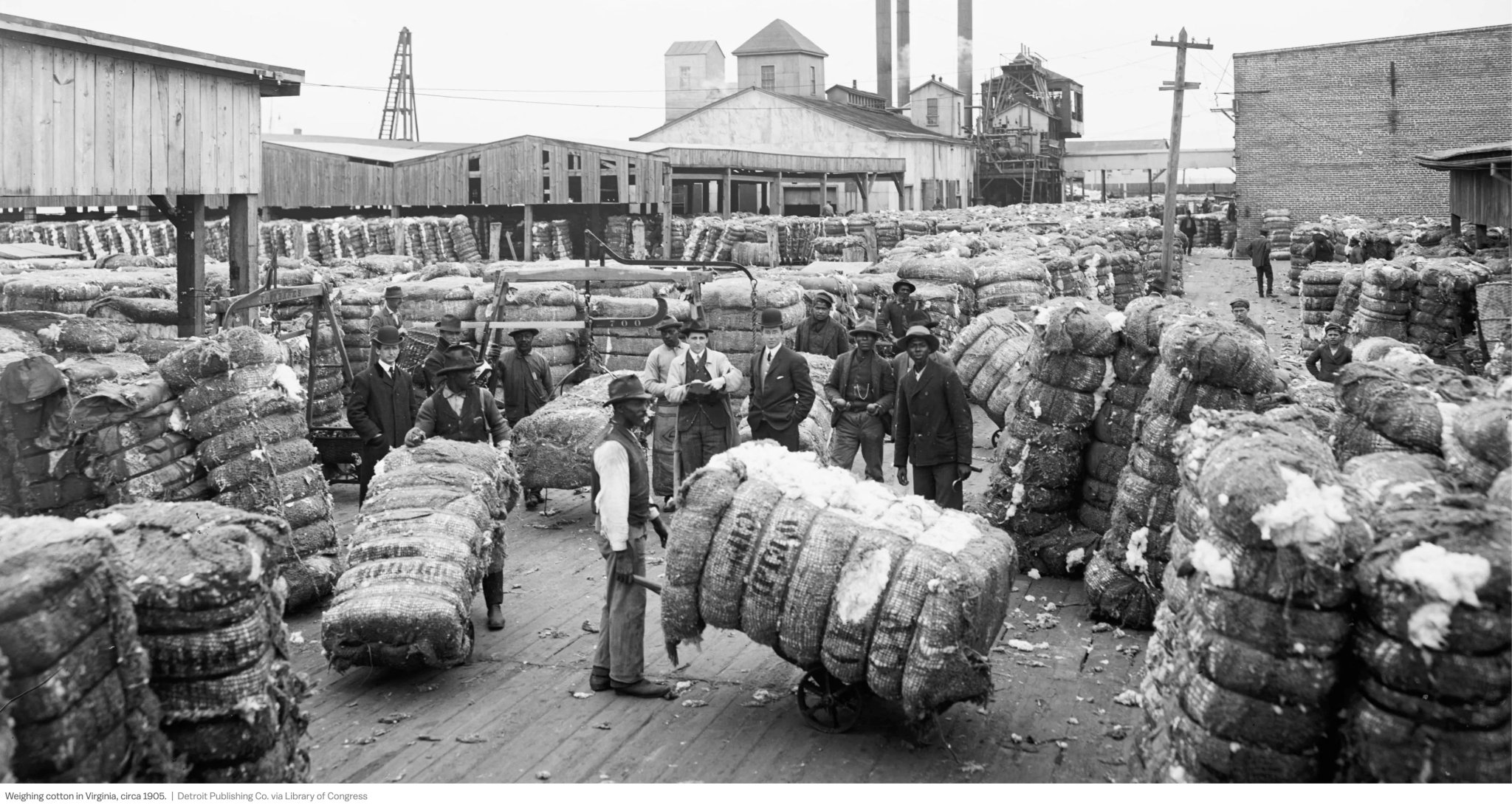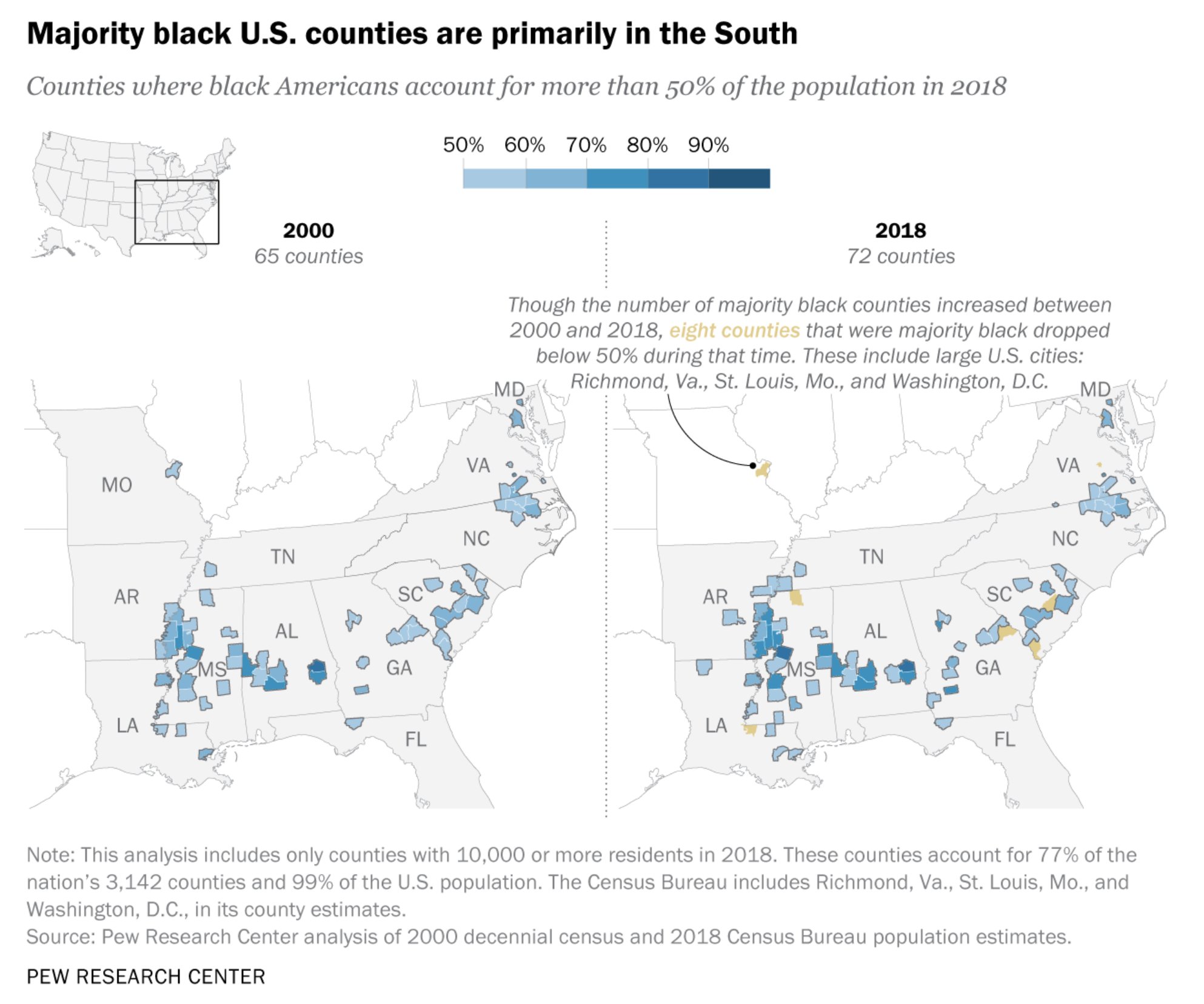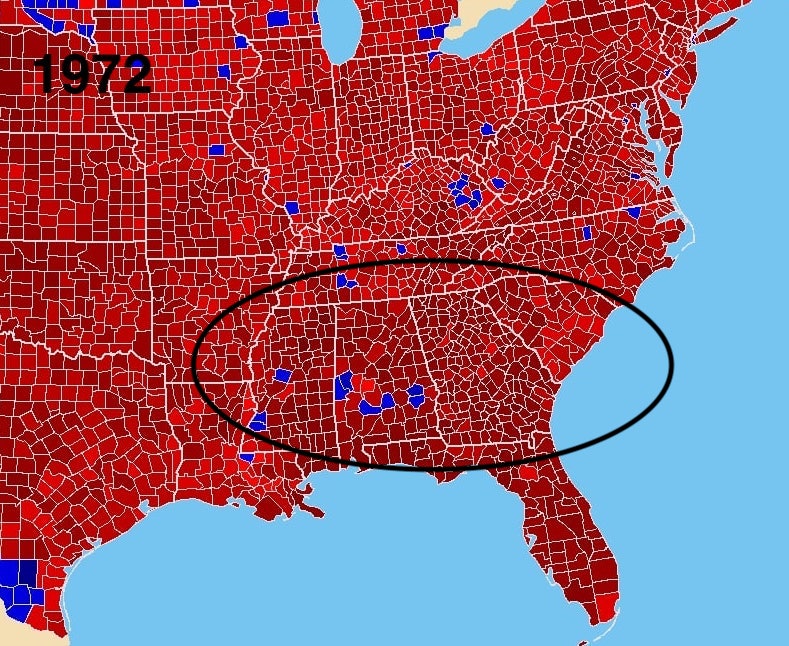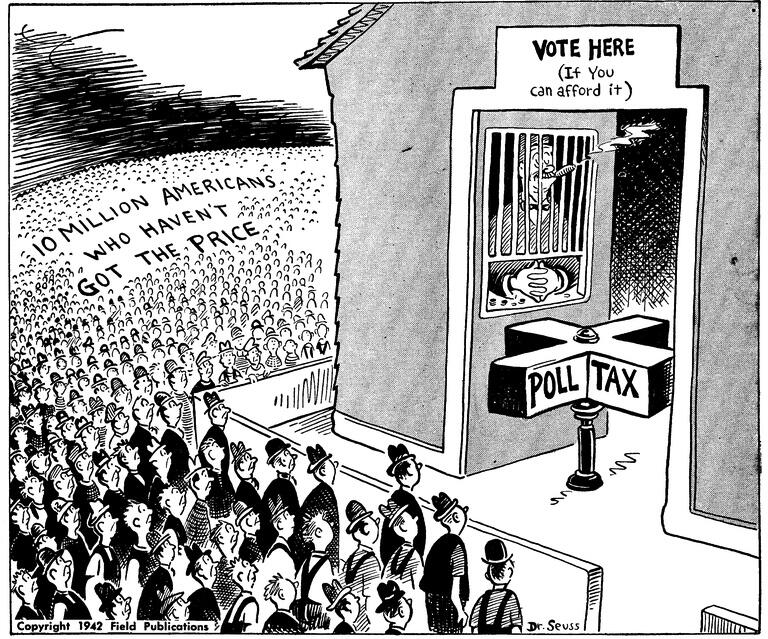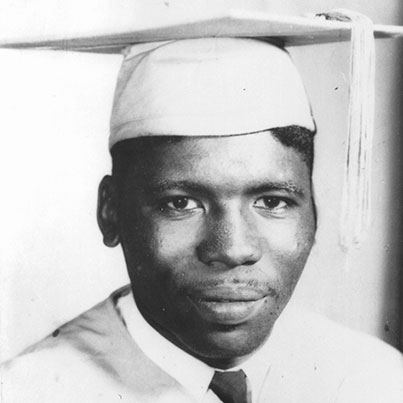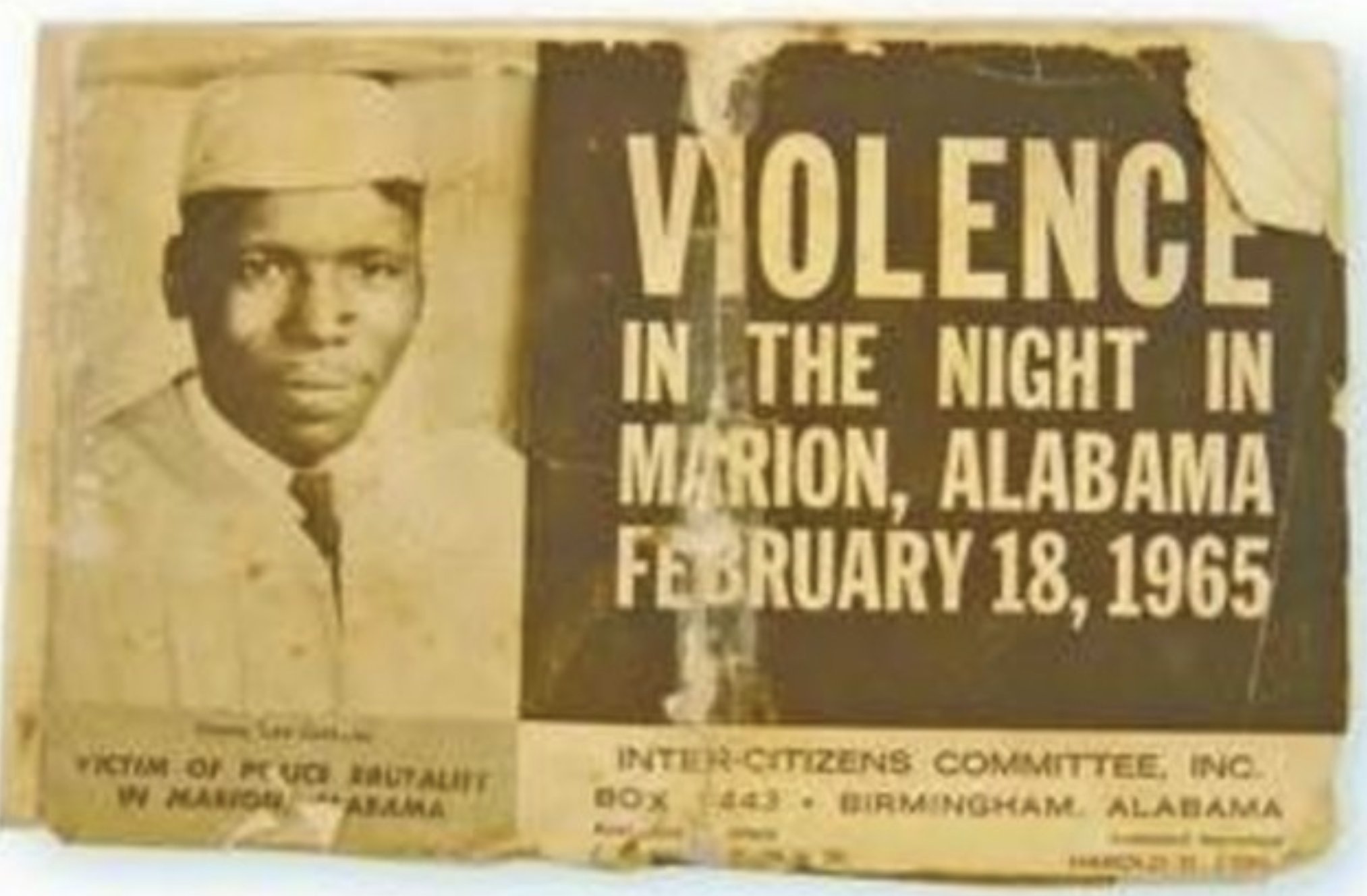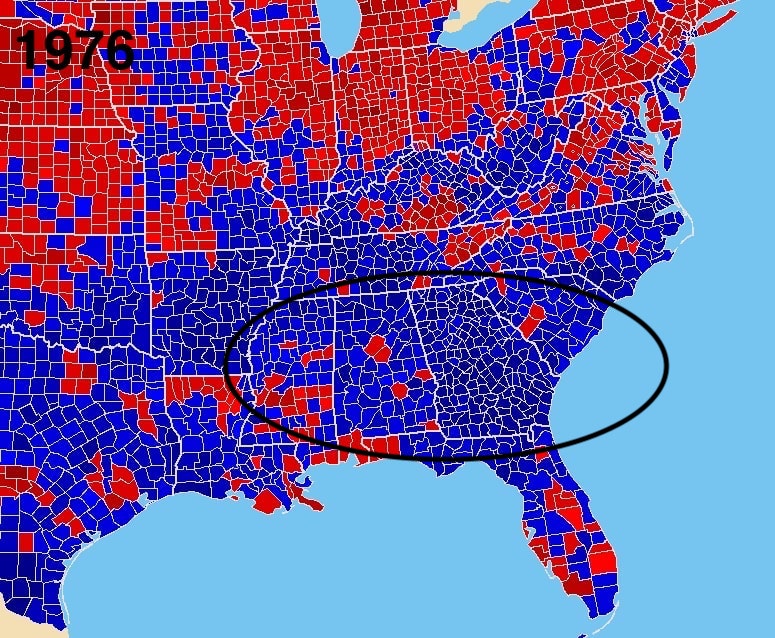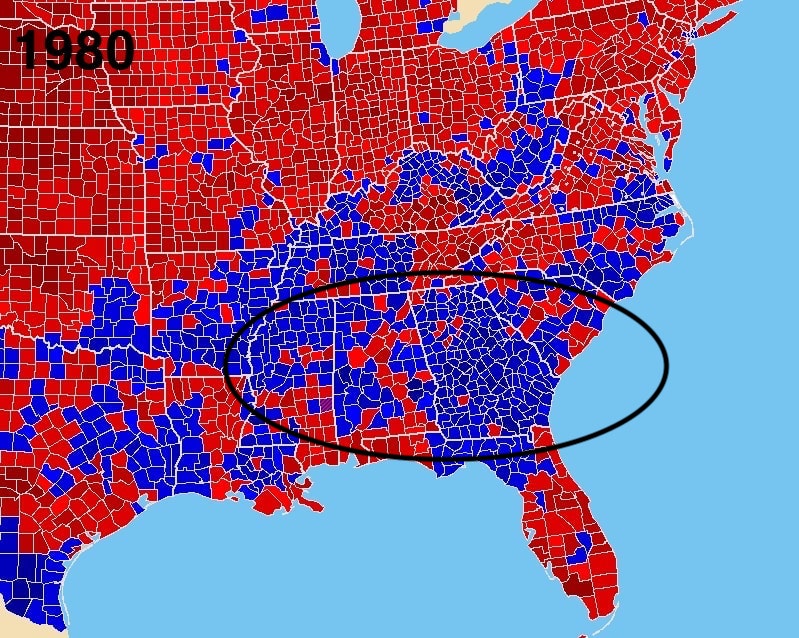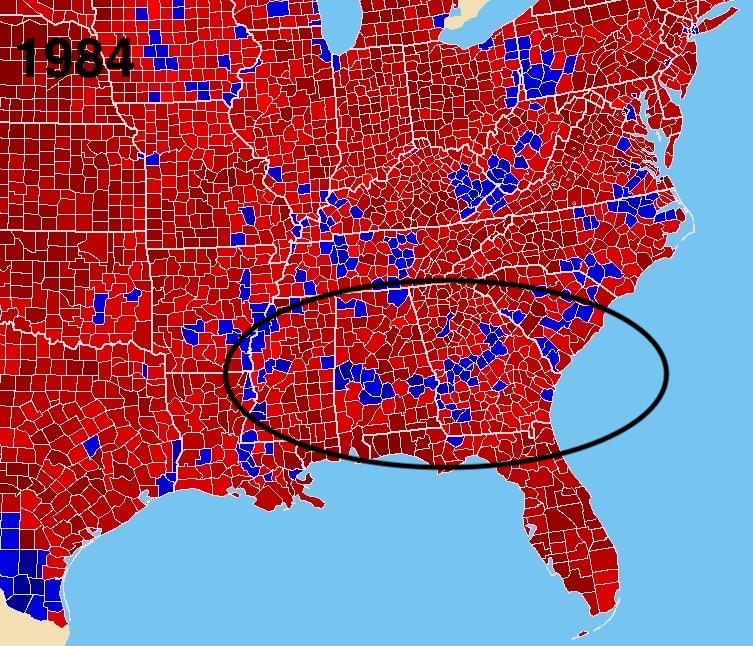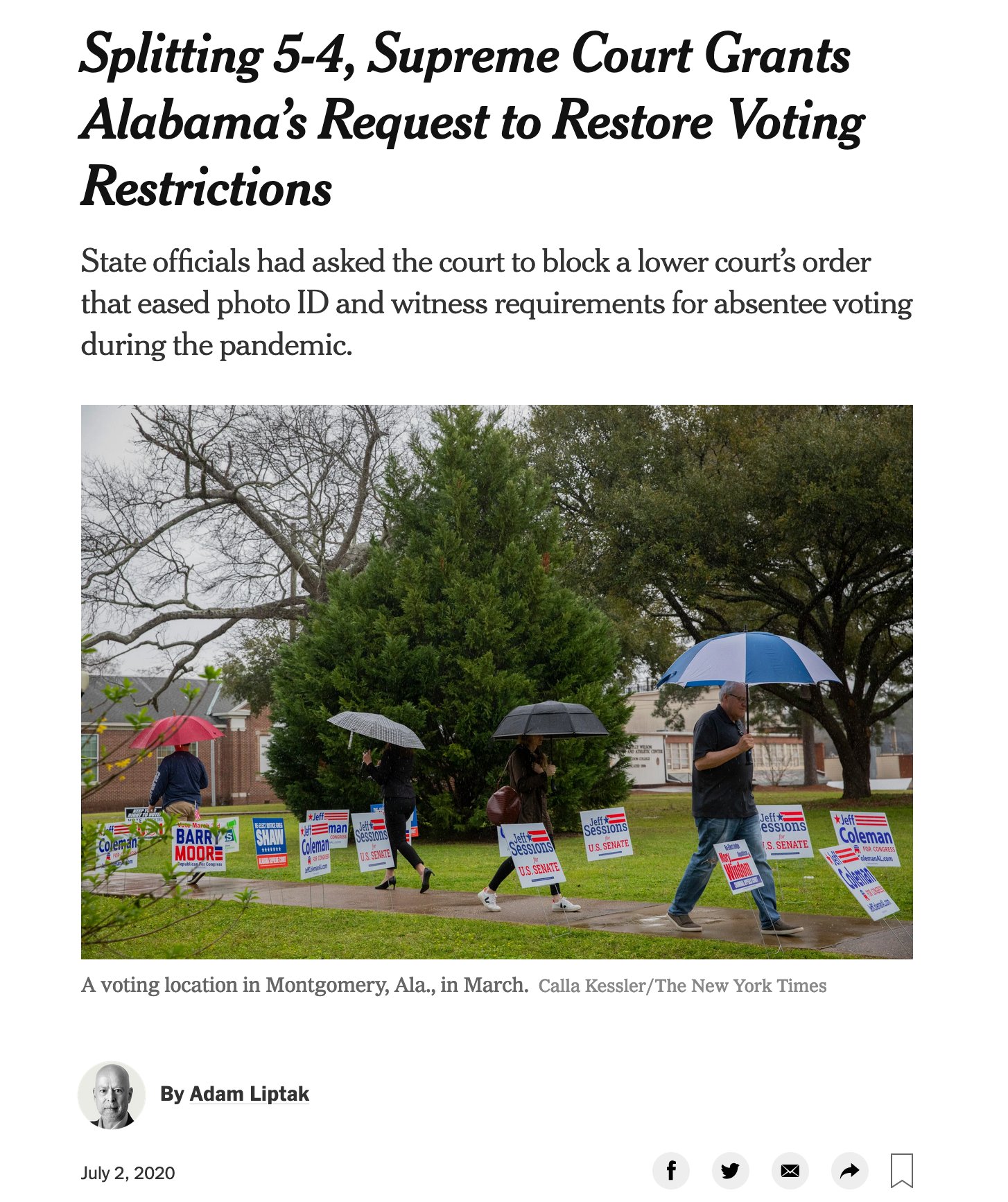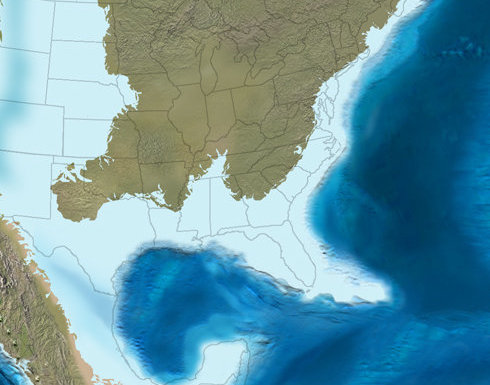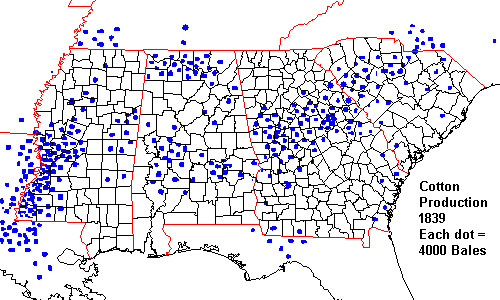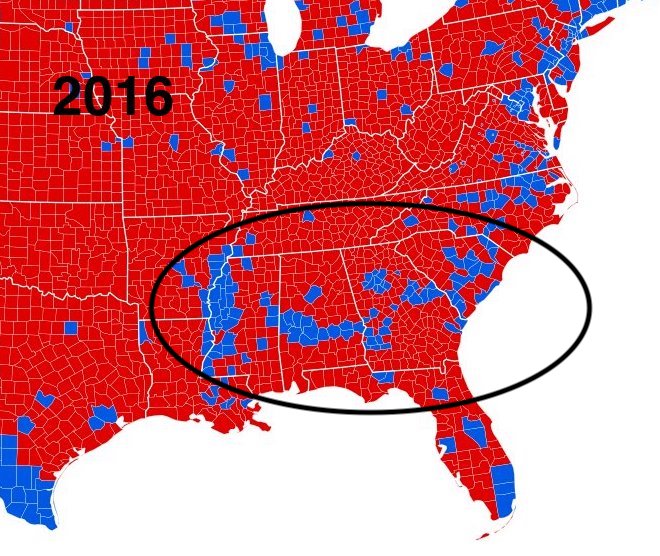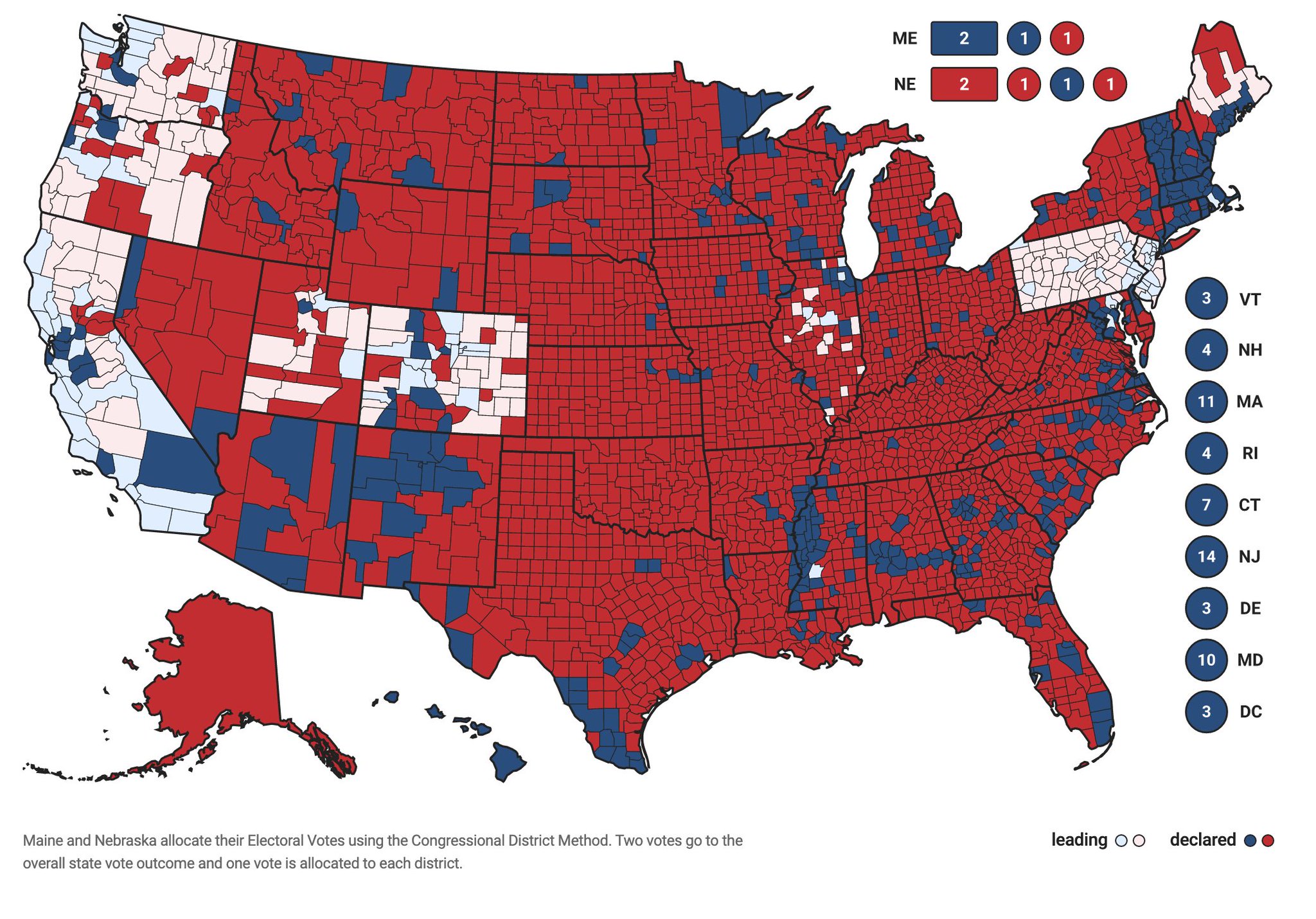Thread
The US election is tomorrow. If you, like me, are tired of horse-race-style reporting, and need to zoom out, I wanna tell you a story. It’s about an ancient force influencing the election. And, as a bonus, it’ll give you an Easter egg to watch for as the returns come in. THREAD
Before I tell the story, I should say I first heard it eight years ago from @rkrulwich. And I never forgot it. Parts of this story might be obvious to some of you, but as a new US citizen, I knew very little of it …
Ok here we go.
Look at the electoral maps by county for the last few decades of US presidential elections. You’ll notice that the South goes almost uniformly Republican red every time.
Duh.
But if you look closer, there’s something else there ...
Look at the electoral maps by county for the last few decades of US presidential elections. You’ll notice that the South goes almost uniformly Republican red every time.
Duh.
But if you look closer, there’s something else there ...
A Democratic blue swoosh running through the heart of the South. As if a painter just swiped a blue brush down the edge of Arkansas and Louisiana, and then swooped up through Mississippi, Alabama, Georgia and into the Carolinas.
Geoscientist Steve Dutch first noticed it in 2000. “My geologist’s eye was immediately drawn to this arc,” he wrote, because it seemed to follow the shoreline of North America back in the Cretaceous.
But … that had to be a coincidence, right? How could these two maps 100 million years apart be so eerily similar?!
To start, let’s go back to the Cretaceous. The oceans are hotter and higher than they are now. Picture millions of plankton minding their own business, just off the shore. When they die, their tiny corpses fall to the ocean floor and get buried by other debris.
Eventually they turn to chalk. As the planet cools down, the oceans recede. Those chalky remains become part of the land. They make the soil extra alkaline, extra organic, and darker than other soil nearby. Due to the soil, the area becomes known as “the Black Belt.”
Now, in part because of the fertile soil (and also because the US forcibly evicted indigenous people living there), farmers swoop in around the 1800s and set up cotton plantations there. They force enslaved people of African descent to work as long as 18 hour days picking cotton.
Booker T Washington summed it up: “The part of the country possessing this thick, dark, and naturally rich soil was, of course, the part of the South where the slaves were most profitable, and consequently they were taken there in the largest numbers.”
By emancipation, many African-American families stayed in the Black Belt, despite conditions barely changing for them. I asked historian Bertis English why they stayed. He told me that many didn’t know where else to go, and even if they did, were too poor to get there.
Fast forward to the 20th C. Many African-Americans leave the South as part of the Great Migration northward, but many families also remain. If you look at a map of US counties w a majority of African Americans today, all are in the South, and most are in the Black Belt.
And yes, since most African Americans vote and have voted Democrat, the reason the swoosh appears election after election for the last 50 years or so is … the descendants of enslaved people.
(*To be sure, not all African Americans vote Democrat. Listen to @TracieHunte on the latest @Radiolab ep discussing the complexity of “the black vote.”)
www.wnycstudios.org/podcasts/radiolab/articles/bloc-party
www.wnycstudios.org/podcasts/radiolab/articles/bloc-party
Anyway, that still leaves the other mystery. Why does the blue swoosh only mysteriously start appearing after the late 1960s / early 1970s?
The answer, once again, lies in the history of the Black Belt.
Even after enslaved people were freed post-Civil War, they still couldn’t vote. Authorities made it virtually impossible: poll taxes, literacy tests, even a pulley system that raised the ballot box out of reach of anyone not White. Not to mention intimidation and lynching.
In 1962, a 24-year-old named Jimmie Lee Jackson from a Black Belt farming family watched his frail 80-year-old grandfather get turned away when he tried to register to vote. Jackson decided to become an activist.
3 years later, Jackson joined a peaceful voting rights protest near his home in Marion, AL. State troopers beat the protestors. Jackson fled to a nearby cafe, where he saw a trooper attack his mom. He tried to defend her. The trooper shot him in the stomach. He died 8 days later.
Jackson’s death galvanized the Civil Rights Movement, inspiring the legendary Selma to Montgomery Marches the next month. The ground they marched on contains what geologists call Selma Chalk, which also dates back to the Cretaceous.
youtu.be/0On19DRA2fU?t=92
youtu.be/0On19DRA2fU?t=92
A week after the third march, LBJ delivers this address to Congress, citing what happened in Selma as grounds for a new civil rights bill specifically devoted to protecting the voting rights of African Americans in the South.
www.youtube.com/watch?v=Bnmc_8pA1tY
www.youtube.com/watch?v=Bnmc_8pA1tY
The Voting Rights Act passes in 1965, is amended in 1970 and 1975. And poof! The Black Belt appears on the map. And stays that way for almost 50 years.
(To be fair, since Democrat Jimmy Carter swept the South in 1976 and 80, you can only actually see it starting in 1984.)
Cut to now. After the Supreme Court gutted the Voting Rights Act in 2013, voter suppression type tactics have returned in Black Belt states. For ex, US Commission on Civil Rights noted “often insurmountable barriers to voting for marginal populations in Alabama” in Feb 2020.
At the same time, we’ve all seen the record number of voters all lined up to vote early in Georgia and other parts of the Black Belt. Will the Black Belt show up again on this year’s electoral map? Keep an eye out as the returns come in.
The Black Belt story is painful but profound.
The death of plankton led to the life of cotton, which led to the bondage of enslaved people who harvested it, which led to the freedom of the voters who descended from them.
Death leads to Life leads to Bondage leads to Freedom.
The death of plankton led to the life of cotton, which led to the bondage of enslaved people who harvested it, which led to the freedom of the voters who descended from them.
Death leads to Life leads to Bondage leads to Freedom.
Future life and freedom — of citizens, of the planet — hinge, in part, on this vote. If you can and you haven't already ... GO CAST YOURS.
PHOTO & MAP CREDITS:
1972, 1976, 1980, 1984 & 2000 by Tilden76 at English Wikipedia, CC BY 3.0
2012, 2008, By Inqvisitor - Own work, CC BY-SA 3.0, 2004 By William S. Saturn - Adapted from File:2012 Presidential Election by County.svg, CC BY-SA 4.0,
2016 By Ali Zifan CC BY-SA 4.0
1972, 1976, 1980, 1984 & 2000 by Tilden76 at English Wikipedia, CC BY 3.0
2012, 2008, By Inqvisitor - Own work, CC BY-SA 3.0, 2004 By William S. Saturn - Adapted from File:2012 Presidential Election by County.svg, CC BY-SA 4.0,
2016 By Ali Zifan CC BY-SA 4.0
Cretaceous rock units, slavery map, cotton production map: Steve Dutch, UW Green Bay
Cretaceous NA: Ron Blakely, Northern Arizona University
Soil: Alabama Cooperative Extension System
Cretaceous NA: Ron Blakely, Northern Arizona University
Soil: Alabama Cooperative Extension System
READ MORE here:
stevedutch.net/research/elec2000/geolelec2000.htm
stevedutch.net/research/elec2000/geolelec2000.htm
CLARIFICATION: I neglected to mention a third reason that Prof English told me about why most former enslaved ppl didn't leave the Black Belt post-Emancipation. And it's quite a poignant one. Quoting him in full:
"Why would you leave? That’s not just a rhetorical question. You have worked this land. By your toil, others benefitted. By your moil, others benefitted. Your mother and your father worked this land that others reaped the reward for.
"Now that your enslavement is legally over, why would you leave land that grew because of your blood, your sweat, your tears, your family members' or other loved ones’ lives being lost, when you could perhaps now own it yourself? That was the divine promise of Reconstruction.”
Mentions
There are no mentions of this content so far.

